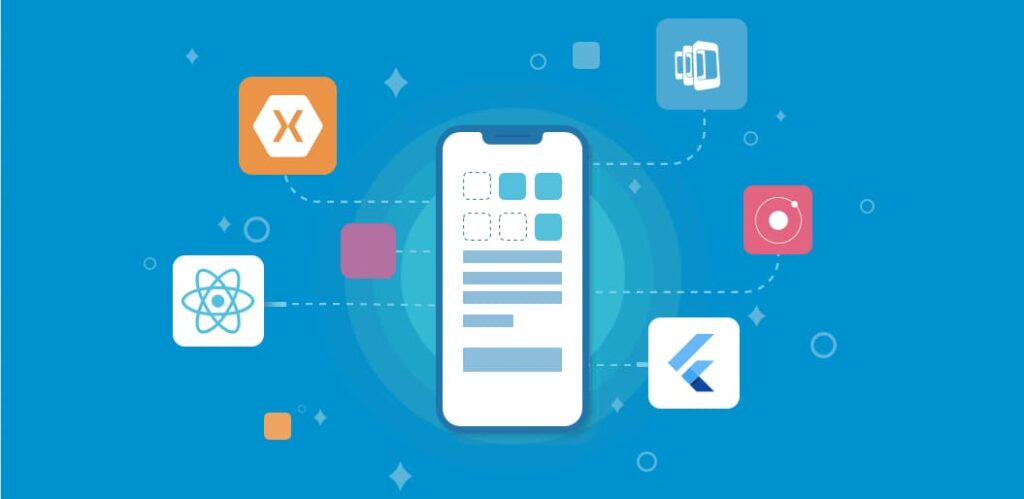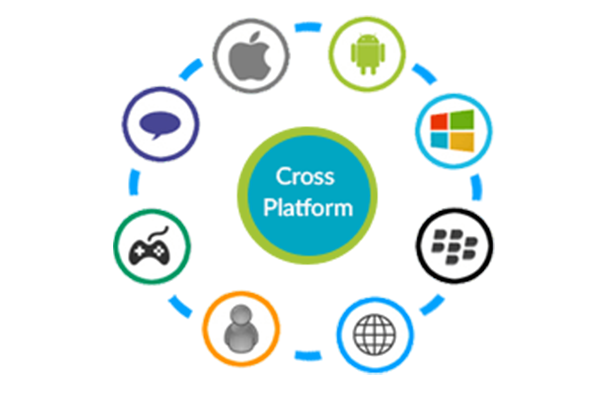
When creating a mobile application, the ultimate goal is to reach the largest number of users possible. However, it is easier said than done because all the users in the world are divided between the major mobile platforms. An Android application will not work on iOS because the code for native apps works differently for each platform. That is where a cross-platform mobile app comes into play.
Based on the current world statistics, Android makes up around 72% of global users while Apple comes up second with 27%. Windows, Samsung, and the other mobile platforms make up the remaining 1%. It shows how Android dominates the market. But, that doesn’t mean that the other major platform, Apple, should be discounted. Users on both platforms behave differently, and you can increase the chances of your app succeeding by appealing to both platform users.
However, native app development for both platforms is a costly and time-consuming process. You can hire an offshore development team to create an app, but that will cost you a hefty sum in the end. As such, wouldn’t a cross-platform app be the perfect solution? That is what we’re going to be reviewing below.
Cross-platform app development

Cross-platform refers to developers using technology to build mobile applications that are compatible with multiple mobile operating systems. This approach allows you to bridge the gap between using a single base of code and reaching your entire target audience.
Here are a few advantages you would gain by using this method:
- You can reduce the overall costs and time taken. Rather than building two or more native apps, you can create one app and deploy them to the mobile platforms you are targeting.
- It will be much easier to maintain the app since you are only using one reusable code. You will be able to sync any future updates to all platforms in one go.
- Since the app will be available to a larger number of users across multiple platforms, you will get a lot more helpful information from them. It would be in the form of user behavior, feedback from using the app, bugs in the code, and more.
- You can integrate cloud functionality into the app, which opens up the possibility to host the app on the cloud. That means you will be able to easily build a cloud-based app with the code currently being used.
What you need to look out for
Before you decide on using cross-platform, it is vital that you also look at why this approach may not be the best for building your app. If the cross-platform option were the perfect way to go, then all developers would be using this method. However, many still prefer to go with native apps, so there must be a reason for that.
Let’s look at some factors you should consider before building an app.
Performance
At times, there may be problems integrating the cross-platform app into certain operating systems. That is because systems like iOS are closed-off platforms and have a lot of restrictions in place. Therefore, the app may not work as intended due to inconsistencies in the code and the operating system’s native code.
UI/UX design
When you build a native app, you can take advantage of the design and usability features that the operating system offers. However, this becomes difficult to nail down when you build code for multiple systems. As such, the app may end up feeling awkward to use and not as optimized as it could be with native app development.
Native Features
Each platform has its own set of features that are built natively for that system. By using a shared code, you won’t be able to take advantage of these features to improve the feel of the app, which may be a problem for the devices’ users.
Integrations
A native app will allow you to easily integrate to the device’s notifications, settings, multitasking features, local storage, and so on. However, this is not easy to do with a cross-platform app. For storage, you may even need to provide a separate cloud storage option.
Cross-platform engineers and why you need to take the right approach
Cross-platform apps add in a little extra memory space, since you need to include cross platform frameworks in the final file. Additionally, your approach may vary depending on the programming.
Flutter, for instance, doesn’t use native components. Instead, you will need the elements to be done from scratch. It’s why you do not want to use the open-source UI Kit if you’re looking to incorporate other services like Google Maps into the app. Taking the right approach will help you get the most benefits.
Additionally, scaling and time-to-market remains the top two issues.
When looking for mobile app developers, you will be hard-pressed to find a competent and experienced developer to create an app for multiple platforms. They usually specialize in either Android applications or iOS applications.
Look for one who has expertise in building true cross-platform apps that can work across devices and environments. You need them to develop uniform design apps that have a single code base. Finally, you need to prototype and beta test your app successfully before making it public.
The choice is yours
Building a cross-platform mobile app may be the best option to reach a broader target audience, and it has many advantages. For one, cross platform mobile apps have access to native features, and offer native performance. With less development and maintenance effort, you will be able to get the results you need.
It costs much less than a native app, takes a lot less time to deploy to the platform, and you will only need one team to work on it. However, to find freelance developers who can build a cross-platform app isn’t as easy.
In the end, your choice will depend on what you aim to get out of the app. As stated above, there are many factors to consider before you make your decision. Ensure that you evaluate all your options before you build the app so that you have the highest chance of making the app a success.
Hi Team,
We appreciate your insightful post and the valuable considerations shared. Creating a cross-platform mobile app can help reach a broader audience while reducing costs and development time. This approach allows one codebase to work across multiple platforms, simplifying maintenance and updates. However, it can pose challenges in performance, UI/UX design, and native feature integration. Scalent – [https://www.scalent.io/] , recognized as a top 10 Golang company, specializes in delivering scalable, high-performance applications, making us an ideal partner for your cross-platform development needs.
Keep up the great work!